It’s no secret I’m a big fan of management simulator video games. I’ve rambled about bad Bullfrog-inspired games, mentioned Maxis games in my review of Euro Truck Simulator 2 and found a worthy successor of Theme Hospital on this very blog. At their core, the search for the maximum efficiency is what thrills me. To crack the puzzle of the game system to make numbers soar.
Survival city-building simulators as a specific management simulator sub-genre add a twist to this search: find the maximum efficiency, or else the people you are in charge of will die. It should add some welcome tension to otherwise peaceful simulators but in practice it doesn’t always reliably. I’ll be exploring this disappointment for me through three games, Banished (2014), Surviving Mars (2018) and Endzone – A World Apart (2021), while providing two examples that successfully took advantage of the tension in RimWorld (2018) and especially Frostpunk (2018).
Now what?
At the heart of survival city-building simulators is a race against time to establish from the ground up a sustainable infrastructure from which a settlement can reliably grow from. Initial supplies are limited, including the work force who directly relies on these supplies as well. There is a lot to be done at the same time, and not enough materials/workers/food/water to do it all at once.
This part is often where the main challenge of the game is. Prioritizing the half-dozen ongoing crises to solve them efficiently, including some ethical quandaries. However these games are generally forgiving, and if you can bear the thought of fictional settlers going hungry for several days it will eventually get better. But once healthy surpluses have been reached, these games often transforms into regular city-building simulators with no more existential threat.
Banished
Banished (2014) has a strong premise: a small group of medieval outcasts have been banished from the existing civilized society to an untamed land. The start is rough, raising the population is a challenge that involves frequently switching settlers around the available jobs because of the early deaths. But then it’s smooth sailing into an Anno game with much less supply chains, sail ships or story arcs. You will never know why this group was banished and it will never have any further repercussions in the game.
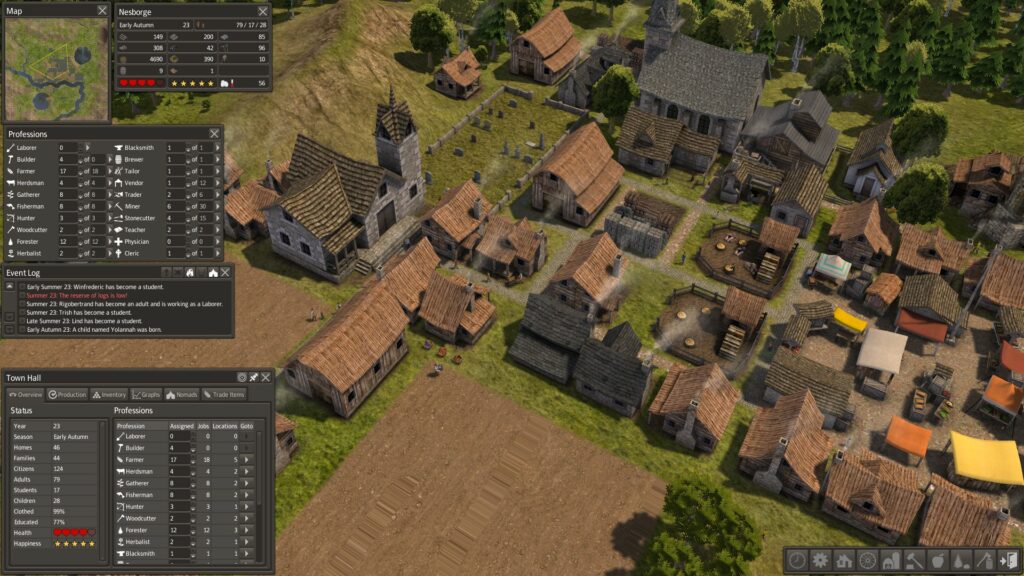
Surviving Mars
Surviving Mars (2018) has a similar dramatic set up. As the first manned mission to Mars in the future, everything has to be done with limited supplies and delayed resupply missions through the shuttle coming from Earth. The unforgiving Mars environment can be exploited for basic resources, but advanced machinery has to be imported. Interestingly, there are a couple different ways to obtain oxygen and water, and some events will render the most obvious way inoperable, which forces a few tough infrastructure decisions.
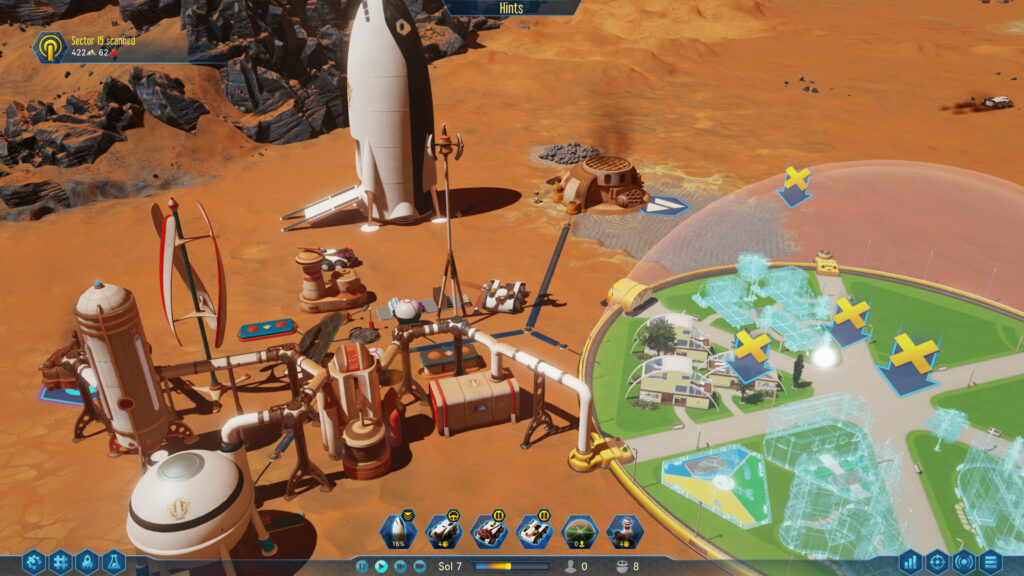
But once again, past the initial challenges of getting a Mars settlement going, there isn’t much in the way of existential threats anymore and there’s nothing exciting to discover around. It’s possible to make the environmental conditions harsher for a tougher challenge, but having the same means to achieve the same goals means that cranking the difficulty doesn’t affect the strategy, it just takes longer to reach sustainability.
Endzone – A World Apart
Endzone – A World Apart (2021) is set in a near-future post-nuclear apocalypse setting. Emerging from underground bunkers, a small group of people is forced to settle on the surface where radioactive rains, droughts and dust storms make food, water and shelter a challenge. Scrap from the pre-catastrophe era is lying around to help with the cloth, metal and plastics need, and settlers will have to contend with the inevitable raiders.
It is possible to visit ruins from the old world, and expedition members will often make passing remark about the abundance in the “old world” (the Western countries right now), especially in the ruins of a nuclear power plant, but it doesn’t say much beyond that. In particular, plastics is treated the same as the other fungible materials like cloth, wood and metal. However, this is not accurate to my understanding, plastics are very specific for the use they were intended for, and it is rarely possible to repurpose them without the same kind of heavy machinery that produced them in the first place.
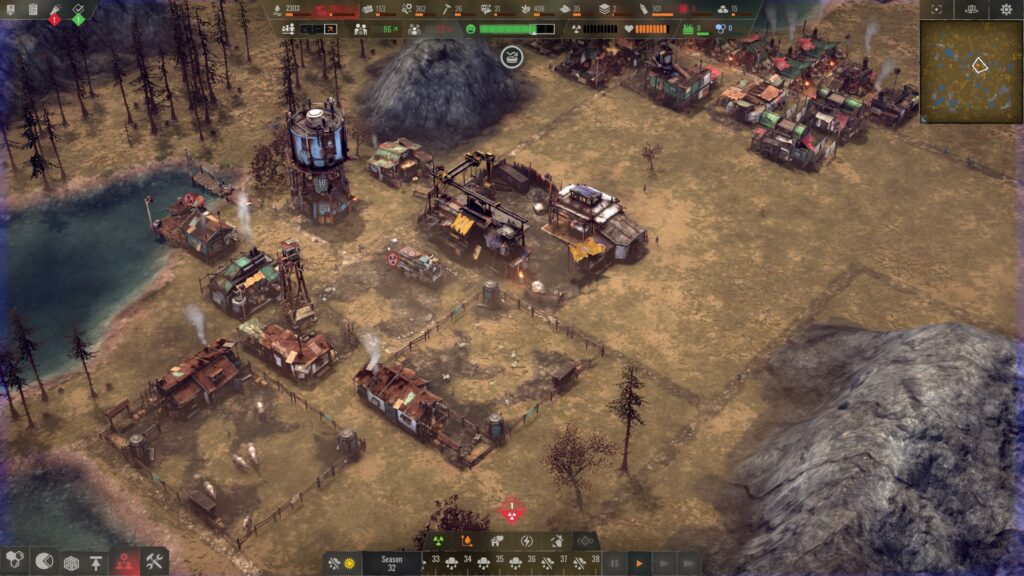
So while this game warns about the risks of harnessing nuclear energy, I feel like it could also have said something about the lack of sustainability of the old world through the heavy use of plastics that settlers of the post-apocalypse would have had a hard time reusing. Additionally, while scrap initially is a finite resource that your scrap collectors have to walk further and further to collect as the game progresses, an endgame building passively collects scrap, removing this final constraint to provide a smooth city-building experience.
These three examples are pretty disappointing overall without being bad games. They just have such a strong narrative premise but I feel like they don’t deliver on it. However, this outcome isn’t inevitable and some survival simulator games have taken full advantage of their narrative premise.
RimWorld
For example, RimWorld (2018) gives player control of a small group of survivors from a spaceship crash on a backwater planet. The small scale of the settlement and the overarching goal to leave the planet maintains the tension after basic needs are meant. Raids by local raiders will intensify until the survivors leave or die, and there are several different ways to manage to escape which allows straightforward or creative play.
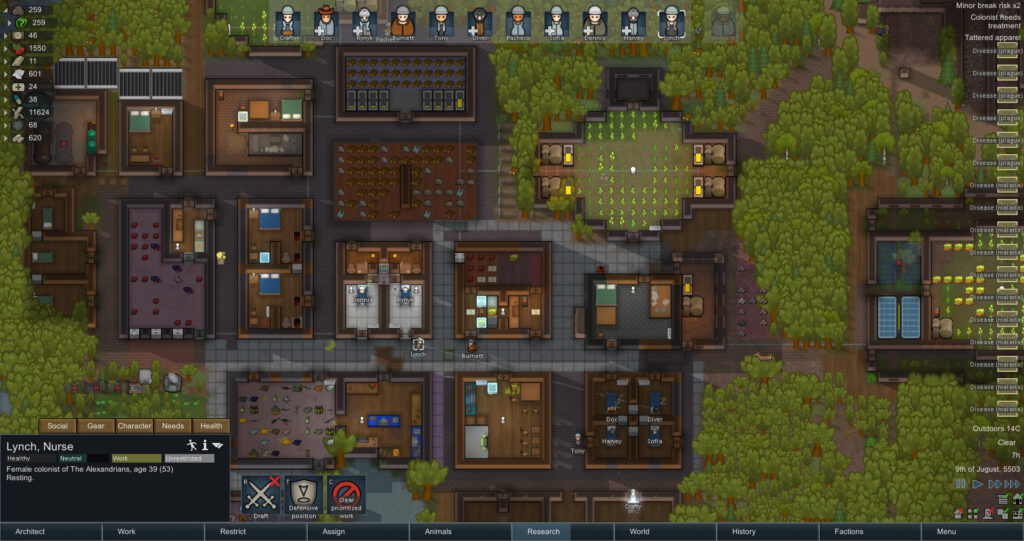
Frostpunk
But for me the absolute masterpiece in the niche genre of principled survival simulators is Frostpunk (2018). Set in a catastrophic steampunk uchronia, people are forced to flee the British isles north from a devastating ice storm coming from the south as an ice age looms. They build a few majestic coal-powered heat generators around which new settlements organize. The player takes control of such a settlement in various scenarios, and must manage the resources, people, policies and technologies required to achieve the scenario’s goal.
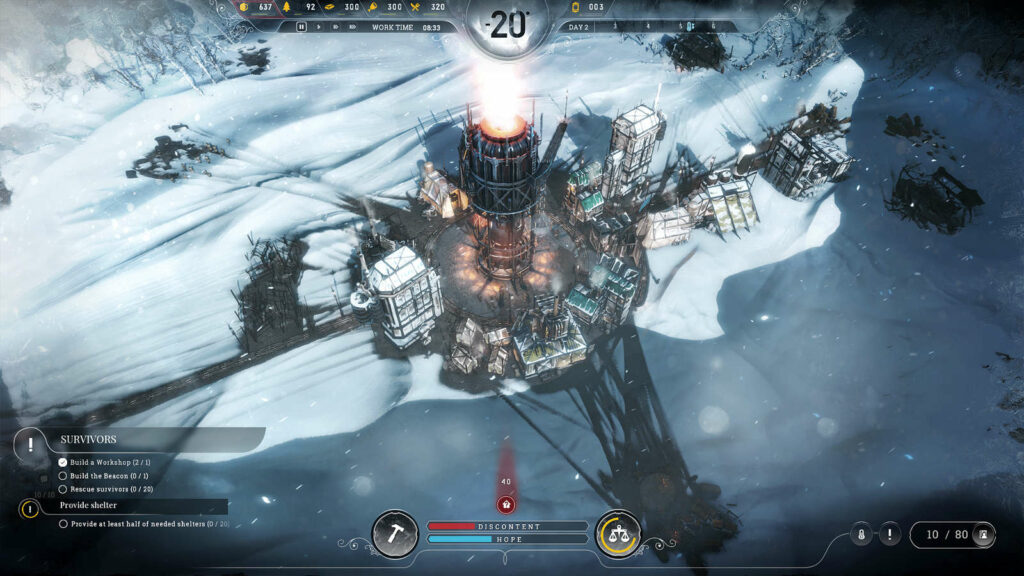
There are several factors making Frostpunk an emotionally-involved endeavor. For example, policy choices are often ethically charged (child labor anyone?) and are almost always definitive, for better or for worse. Beyond the classic health, the game also tracks people’s hope towards salvation in an unforgiving environment. The distinction with the usual abstract “morale” gauge is important, it is a reminder that the people you’re in charge of are working towards a specific goal that depends on the scenario.
Almost all the scenarios are time-limited, and this is how Frostpunk is able to maintain the tension throughout a whole game. Because they are bounded in time, success or failure isn’t assured until the very end, and the relative difficulty will ramp up throughout the timeline, culminating in an excruciating finale where all the work and the careful planning that went into the earlier stages of the game are put to a final test.
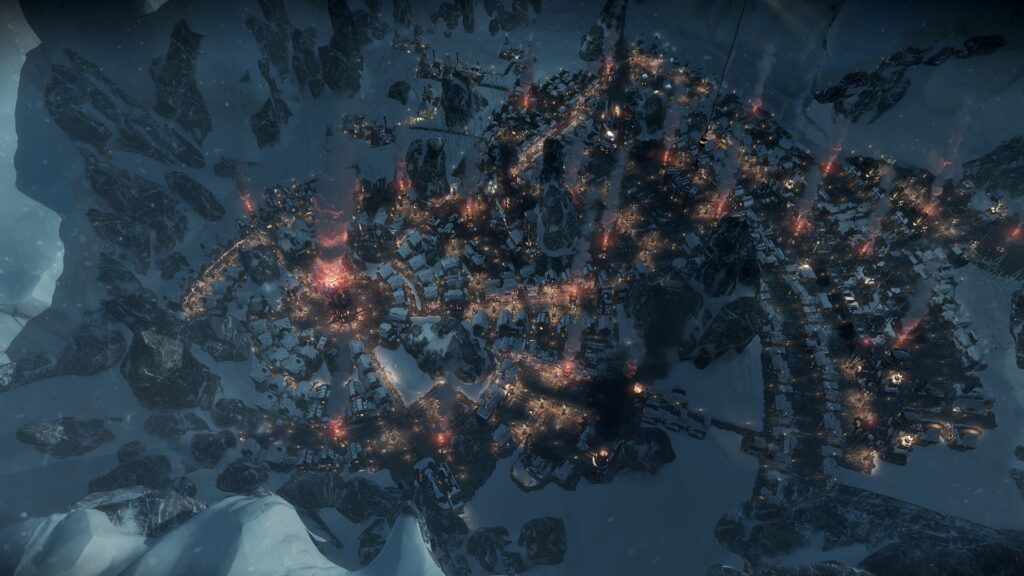
Conclusion
I don’t always pick the games I play because they carry a specific political message, but when the premise of a game suggests there could be one, I can be disappointed when there’s none in the end. Classic city builders definitely don’t have any message expectations from me, but when death is on the line, I like to know it is for something. And in that regard Frostpunk is masterfully delivering.

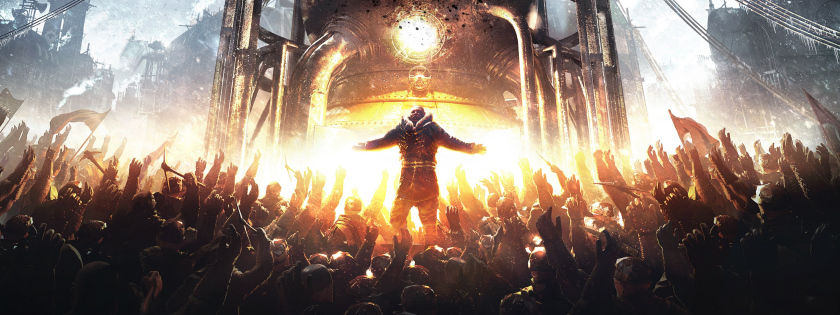
Happy to read that Frostpunk is really as good as I imagined it to be. I really just didn’t purchase it because in that year I purchased Linux games only. Mebbe I’ll eventually get it on a discount some day. I’ve a backlog piled up to play through first 😅
The good thing about Frostpunk for me was that it delivered an intense experience in relatively few hours of play. I’m gushing about it even though I “only” played the game for 16 hours. So it could (and it should) make it towards the top of your backlog for this simple reason: it wouldn’t stay for too long on it.